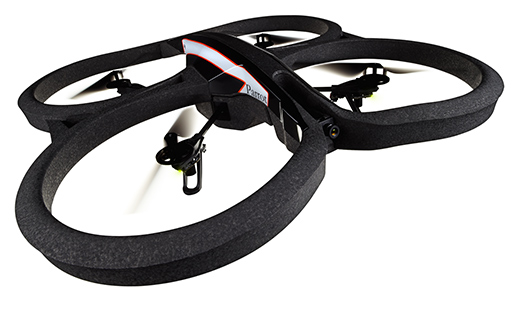
A drone that guides blind runners around a track is just one of several new fitness technologies designed to assist the visually impaired.
While NASA is working to make drones quieter, one researcher at the University of Nevada, Reno, is using its noise to benefit blind athletes.
Eelke Folmer, an associate professor of computer science and the head of UNR’s Human Plus Lab, has built a prototype drone system that guides blind runners around a track, allowing them to exercise independently without a sighted guide. Equipped with two cameras—a downward-facing one that follows the lines on a track and a separate camera that focuses on a marker on the runner’s shirt—Folmer’s quadcopter flies at eye level, about 10 feet ahead of a runner, guiding them by sound. If the runner speeds up or slows down, the drone adjusts its own speed.
Folmer says he hasn’t been able to test it outdoors yet because the university is so close to the Reno airport it is subject to FAA regulations on drones. He is currently seeking permission from the airport’s radio tower to override this rule. “We’ve done some very simple trials inside just following a straight line and it seemed to work,” Folmer says. “I’m not sure how it’s going to be on a real oval where you also have to go through a turn.”

Researcher Eelke Folmer used this drone with a foam hull for the project to prevent damage or injury if someone were to run into it.
Assistive devices for navigation and communication abound, but relatively few technologies aim to help the visually impaired tackle fitness and obesity, the latter of which disproportionately impacts the disabled community. About one in three able-bodied adults in the U.S. are considered obese or extremely obese according to research published in the American Journal of Preventive Medicine, but among disabled adults, that rate rises to one in two. For those with mobility, navigation, or vision impairments, doing vigorous activities—the kind that actually burn calories and build muscle—can be tough.
Another of Folmer’s projects focuses specifically on increasing accessibility to moderate and vigorous exercise. VI Fit is a series of video-less video games created for blind children, though able-bodied users can play along. Developed for the PC platform, each of the three fitness games in the VI Fit series uses a Nintendo Wii controller to track motion, and guides players through bowling, tennis, or whack-a-mole style play using audio and tactile cues. The games are free and two use open-source code, allowing developers to tweak the games as they see fit or create new ones.
No comments:
Post a Comment